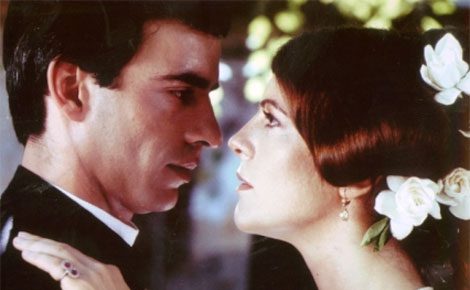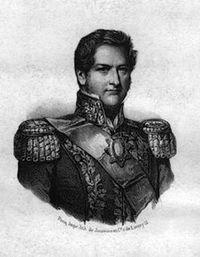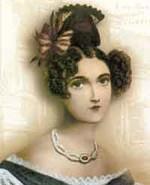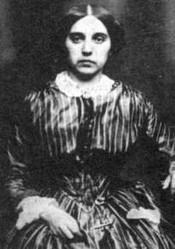Juan Manuel de Rosas and Camila O'Gorman

"Romeo and Juliet may be the most well known tale of star-crossed lovers, but ask any Argentine and they will know the story of Camila O’Gorman and Ladislao Gutierrez just as well. The ill-fated love affair between the strong-willed daughter of an elite landowner and a Catholic priest, depicted in the 1984 film Camila, is a multi-layered story that ties together romance, the political history of the nineteenth-century Latin America, and echoes of government corruption across centuries.
The story of Camila and Ladislao unfolded during Juan Manuel de Rosas’s twenty-year rule of Argentina from 1829 to 1852. The conservative caudillo directed the newly independent country with an iron hand. He upheld the colonial social hierarchy, allied with and supported the Catholic Church, closed the country to external trade and censored the flow of information in and out of its borders. In this claustrophobic setting, the fiercely independent Camila read contraband books and dreamt of marrying for love rather than familial duty. When a new priest arrived in Buenos Aires from the province of Tucumán and spoke out from the pulpit against the violence of the Rosas regime, Camila fell desperately in love. It did not take long for Ladislao, forced into the priesthood as the filial duty of a second-born son, to reciprocate her feelings. Knowing their love was forbidden, they fled in the night to the neighboring province of Corrientes, where they began life anew as a poor schoolteacher and his wife. Soon, however, a priest from Buenos Aires recognized Camila and reported her whereabouts to her father. The two were quickly arrested and sentenced to death – despite the fact that Camila was eight-months pregnant..."
THE SCARLET TRINITY: THE DOOMED STRUGGLE OF CAMILA O’GORMAN AGAINST FAMILY,
CHURCH & STATE IN XIX CENTURY, BUENOS AIRES
"CAMILA O’GORMAN died on the 18 of August 1848 in Santos Lugares, a paltry prison town in the northwest of Buenos Aires province. with the sad reputation of being the headquarters of repression of the ROSAS government. She was shot by firing squad even though she was eight months pregnant. As a last gesture of Christian charity, she was given holy water to drink so her baby would go to heaven, and a chair to sit in front of her executors. She was 20 years old. Her crime had been to love too much in the wrong time and in the worst ace."

Juan Manuel de Rosas
His family had some of the biggest cattle ranches in the country, but Juan Manuel de Rosas made a different contribution to Argentina. Rosas had his own land, became a cowboy, and managed a meat-seating plant. In 1820, he became the leader of the provincial militia. In 1829, he was elected governor after opposing the unitarios. After three years, he left his post until he was given dictatorial powers. Claiming to be federalist, he ruled as dictator for 17 years. Known for his tyranny, Rosas and his secret police intimidated the opposition.
Topic: Rosas, Juan Manuel de
anguage: English
Lexile: 1160
http://www.britannica.com
Juan Manuel de Rosas (1793-1877)
The dictatorial governor of Argentina from 1829 to 1852, Juan Manuel de Rosas provided stability and promoted economic growth by stopping civil wars. Yet, he used violence to maintain control. Growing up on a wealthy ranch, he secured the southern frontier in the 1820s and became a provincial leader. He consolidated his power in his firstterm, but took a break in the 1830s when he wasn't given enough authority. Rosas built the cattle industry once he eliminated political opposition. Defeated at the battle of Caseros, he spent the rest of his life in England.
Topic: Rosas, Juan Manuel de
Language: English
Lexile: 1330
Biography: http://www.library.nd.edu
Rosas, Juan Manuel (1829 - 52)

History of Argentina
"The struggle between Unitarists (favouring centralization) and Federalists (demanding autonomy for the regions) becomes the main political issue in the early years of the republic. But the question is somewhat academic from 1835 during the dictatorship of Juan Manuel de Rosas - paradoxically the leader of the Federalists, yet a man with the personal power to control every region of the nation." Read more...
Camila O'Gorman by Leon Pallière

- Camila O'Gorman, the Romantic Heroine of Argentina
- Camila O'Gorman: a Rose Among the Thorns
- Camila O'Gorman | Project Gutenberg
Adolfo O'Gorman to Juan Manuel de Rosas [Letter] Primary Source

Can find no definitive information as to who took this photograph of (supposedly) Camila O'Gorman
SCREEN: 'CAMILA,' STORY OF LOVE IN ARGENTINA
By VINCENT CANBY
Published: March 15, 1985 Can find no definitive information as to who took this photograph: photograph is said to be Camila O'Gorman
Databases:
*Brought to you by the Massachusetts Board of Library Commissioners and Massachusetts Library System with state funds and federal Institute of Museum and Library Services funds.
Español 5 Argentina “Camilia”
Paso 1:
Analizar la actividad y asignar las tareas de investigación
Trabajen en grupos de cuatro para repasar lo que leyeron de Argentina, Juan Manuel De Rosas, y de Camila
O’Gorman y para conversar sobre sus reacciones a ellos. Incluyan en su conversación las preguntas que siguen y apunten sus respuestas en el recuadro de abajo.
- EResources
- Ebooks
- Contests and Opportunities
- Faculty Resources
- Library Good Reads
- GradPoint (opens in new window)
- LibGuides
- NHS Library Seminars (opens in new window)
-
Historical Links
- Immigrant Groups in the West
- Immigrant Groups in the West Making the Connections
- Immigration Symbols
- Immigration West
- Industrial Revolution Resources List
- Industrialists
- Korean War
- Legacy of Jim Crow
- The 60's
- Women and the Industrial Revolution
- Working Women and the Industrial Revolution
- Working Women During the Industrial Revolution
- Against Slavery
- Immigration
- Louis Braille An Exceptional Man
- MLA and APA Style Guides
- Norwood High School Home
- Quick reference
- Research & Instruction
- Summer Work
- Textbooks
This site provides information using PDF, visit this link to download the Adobe Acrobat Reader DC software.



